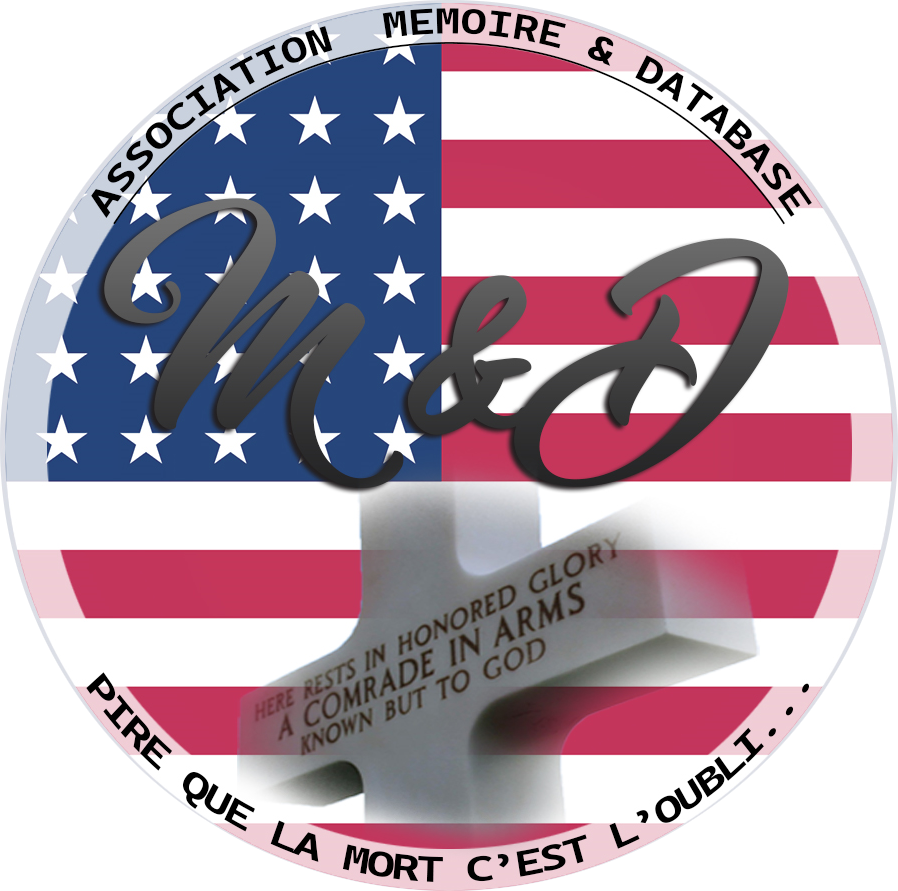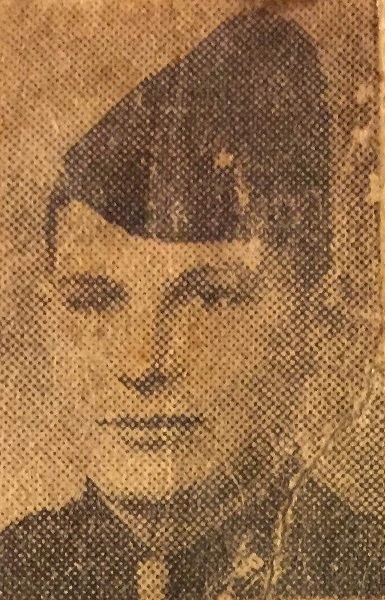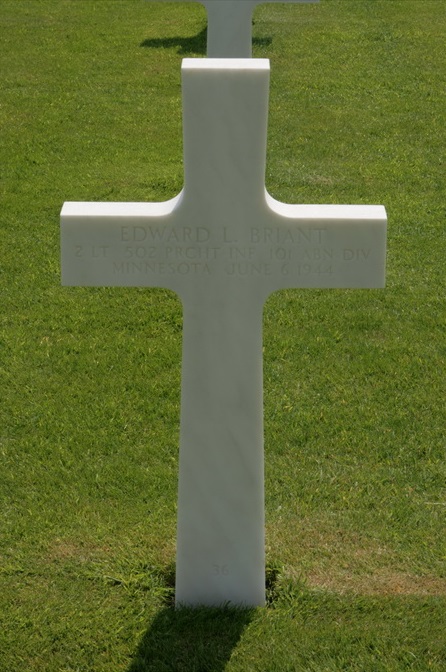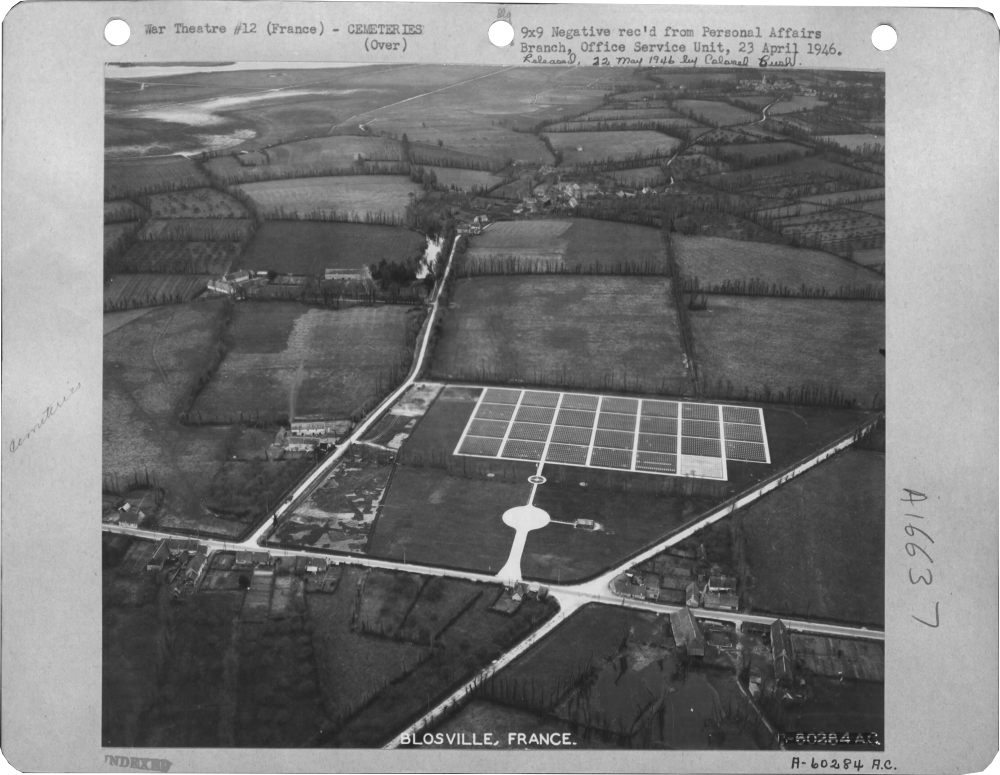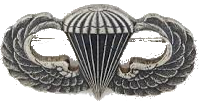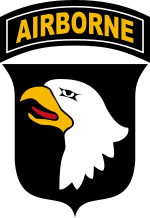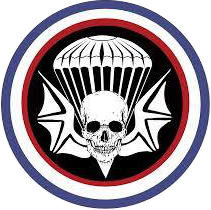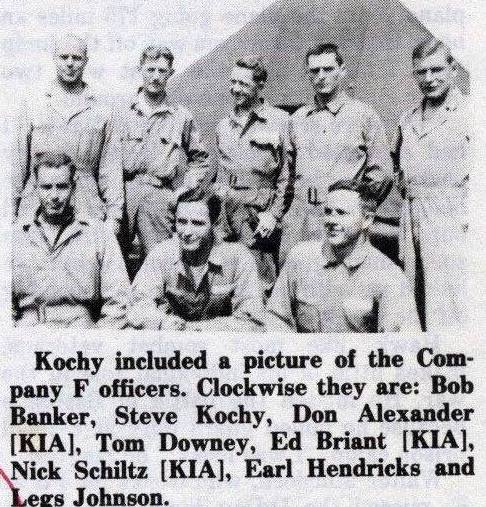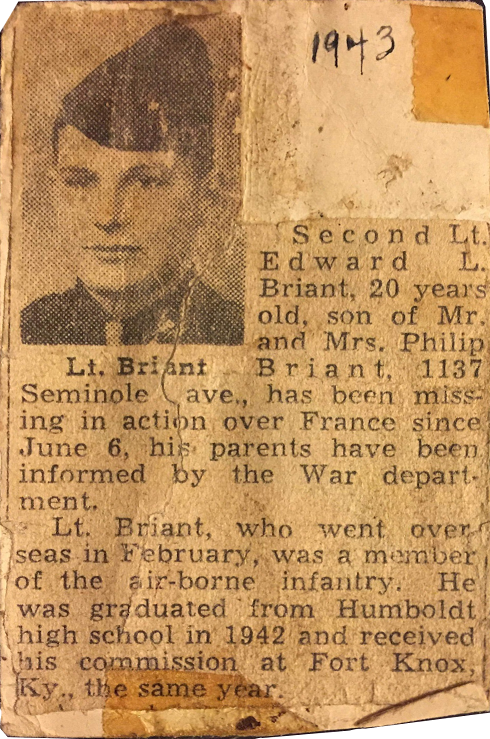|
Edward Louis BRIANT
| ||||||||||||||||||||||||
|---|---|---|---|---|---|---|---|---|---|---|---|---|---|---|---|---|---|---|---|---|---|---|---|---|
|
Source : Jérôme Perrier
| ||||||||||||||||||||||||
| NUMBER OF SERVICE | O 1018045 | |||||||||||||||||||||||
| AGE | 20 yo | |||||||||||||||||||||||
| DATE OF BIRTH | 30 April 924 Itasca County, MINNESOTA | |||||||||||||||||||||||
| ENLISTMENT STATE | MINNESOTA | |||||||||||||||||||||||
| FAMILY |
Parents : Philip & Rose BRIANT | |||||||||||||||||||||||
| RANK | Second Lieutenant | |||||||||||||||||||||||
| FONCTION | Paratroopers - Platoon Leader | |||||||||||||||||||||||
| JOB BEFORE ENLISTEMENT | Actor |  | ||||||||||||||||||||||
| DATE of ENLISTEMENT | 13 June1942 Fort Snelling MINNESOTA | |||||||||||||||||||||||
| COMPANY | Company F | |||||||||||||||||||||||
| BATTALION | Battalion | |||||||||||||||||||||||
| REGIMENT | 502nd Parachute Infantry Regiment | |||||||||||||||||||||||
| DIVISION | 101st Airborne Division | |||||||||||||||||||||||
| DATE OF DEATH | 6 June 1944 |
Source : Dominique Potier | ||||||||||||||||||||||
| STATUS | KIA | |||||||||||||||||||||||
| PLACE OF DEATH | ||||||||||||||||||||||||
| CEMETERY TEMPORARY |
CEMTERY TEMPORARY of -- N°--
| |||||||||||||||||||||||
| CEMETERY | NORMANDY AMERICAN CEMETERY of Colleville | |||||||||||||||||||||||
| GRAVE |
| |||||||||||||||||||||||
| DECORATION |
| |||||||||||||||||||||||
| ||||||||||||||||||||||||
| STORY | ||||||||||||||||||||||||
|
Edward Louis Briant was born April 30, 1924 to Philip and Rose Waetzig Briant in Itasca County, Minnesota. Older Brother Phil W. Briant was a Staff Sargeant in the Army Air Force. |
Source : Jérôme Perrier
| |||||||||||||||||||||||
|
From an article on www.dday.org: “On 5 June 1944 the 502nd Parachute Infantry left the departure airdromes for the invasion of France. The landing was to be made on the Cotentin Peninsula south of Cherbourg in the vicinity of Saint Martin de Varreville. The first Battalion in 36 planes and the remainder of the regiment in 81 planes left Membury and Greenham Common Airfield respectively. All was airborne by 2330 and the serials began marshaling at their rendezvous for the trip To France. These were by far the most important minutes in the lives of all the men but in no way did they betray the fears that any of them might have had regarding the dangers that would beset them in the next few hours. They were cheerful and at ease– discussing the visit of General Eisenhower who had come down to see them off– talking about Bill Lee–reading General Montgomery’s letter. There was no fearful tenseness that might be expected. Each man had a job and he knew what the job was. Everyone was eager to get in and pitch. We crossed the channel and turned left on our approach leg about 0030. The coast of France loomed up through the light fog that had come to make things a little disagreeable for us. At 0048 the red light came on and jumpmasters electrified into action. “Stand in the door”– crowd forward– reach forward—listen—tense– excited now. Red light! “Let’s go Bill Lee!” [NOTE: General William Lee, often called the Father of the US Airborne, had commanded the 101st Airborne since it’s activation in 1942. The beloved commander almost certainly would have been one of the first to hit the ground in France on D-Day. However, a heart attack forced him to return stateside in 1943. In his tribute, the 502nd took his name as their rally cry.] | ||||||||||||||||||||||||
|
With the cry of “Bill Lee” the 502nd Parachute Infantry hit the silk and ascended like Hitler’s doom on occupied France. The jump was widely scattered covering an area of 7.25 x 8 miles. The first serial jumped at 0053 and the subsequent serials a short time after. All the planes met considerable flak and machine gun fire and the descending troopers were fired on by small arms and automatic weapons. Many chutists landed within or near strong points and enemy gun positions; some were in the inundated area; on housetops; in trees; many never got their chutes off they were found later, hanging in the webbing, never having fired a shot. The bulk of the regiment, however, found opposition varied with the locality. In some places the enemy had a definite plan of defense, but by and large the resistance was not coordinated. The enemy generally stayed in their positions and fired indiscriminately at every noise and shadow. Machine gun emplacements at important road intersections were quickly liquidated but in the initial action did cause some casualties. Commanders of all grades began gathering all available personnel in the vicinity and proceeded to the objectives. The gun position at Saint Martin de Varreville was taken by 0400. |
Source : Jérôme Perrier
| |||||||||||||||||||||||
|
Part of the force was then sent to causeways #3 and #4 and by 0600 these were under our control. During the ensuing few hours isolated groups of the regiment fought in numerable skirmishes and battles. A large portion of the Second Battalion engage the enemy at Turqueville, France, and fought there for four hours until enemy reinforcements forced them to withdraw. By 1200 elements of the fourth division began passing through the third Battalion area (causeways). these included portions of the 8th and 22nd infantries. They were organized and didn’t look too tired. They reported unofficially that the beaches and causeways were all clear and that landing hadn’t been too hard a job. All of them sincerely appreciated our being there and the assistance that we had given their landings. By : michelinesmith387(Fold3) | ||||||||||||||||||||||||
Activated/Activé |
Normandy/Normandie |
| 15 Aug 1942 | Days of Combat/Jour de Combat 214 |
| Casualties/Victimes 9 328 | |
Entered Combat/Entré au combat |
|
| 6 Jun1944 D-Day | |
|
Commanding Generals/Commandants généraux Maj. Gen. William C. Lee (Aug 42 - Mar 44) |
Campaigns/CampagnesNormandy (6 Jun 44 - 24 Jul 44) Rhineland (15 Sep 44 - 21 Mar 45)
|
PLAN DE ROUTE DE LA CAMPAGNE - CAMPAIGN ROUTE MAP |
|
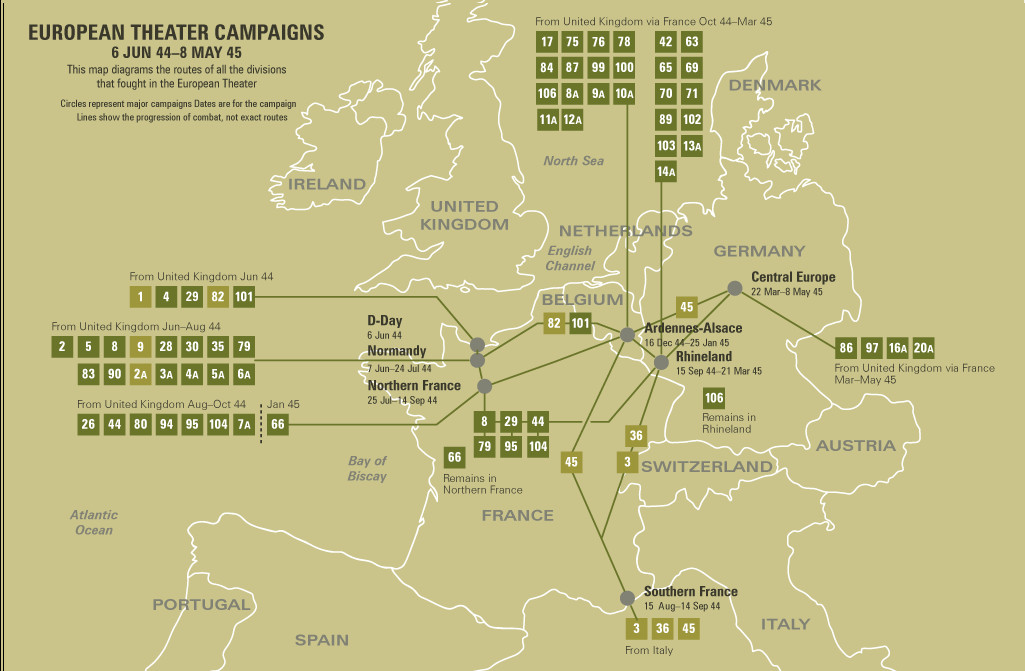 |
|
DIVISION CHRONICLEThe 101st Airborne arrived in England, 15 September 1943, and received additional training in Berkshire and Wiltshire. On 6 June 1944, the Division was dropped into Normandy behind Utah Beach. Against fierce resistance it took Pouppeville, Vierville, and St. Come du Mont. On the 12th, the stronghold of Carentan fell, and after mopping up and maintaining its positions, the Division returned to England, 13 July, for rest and training. On 17 September 1944, taking part in one of the largest of airborne invasions, the 101st landed in Holland, took Vechel and held the Zon bridge. St. Oedenrode and Eindhoven fell after sharp fighting on the 17th and 18th. Opheusden changed hands in a shifting struggle, but the enemy was finally forced to withdraw, 9 October. After extensive patrols, the Division returned to France, 28 November, for further training. On 18 December, it moved to Belgium to stop the German breakthrough. Moving into Bastogne under the acting command of Brig. Gen. Anthony C. McAuliffe, it set up a circular defense and although completely surrounded, refused to surrender on 22 December. Its perimeter held against violent attacks. The 4th Armored Division finally reached the 101st on the 26th and the enemy offensive was blunted. Very heavy fighting continued near Bastogne for the rest of December and January. On 17 January 1945, the Division moved to Drulingen and Pfaffenhoffen in Alsace and engaged in defensive harassing patrols along the Moder River. On 31 January, it crossed the Moder in a three-company raid. After assembling at Mourmelon, France, 26 February 1945, for training, it moved to the Ruhr pocket, 31 March, patrolling and raiding in April and engaging in military government at Rheydt and Munchen-Gladbach. The 101st reached Berchtesgaden by the end of the war and performed occupational duties until inactivation in Germany. |
CHRONIQUE DE DIVISIONLe 101st Airborne est arrivé en Angleterre, le 15 septembre 1943, et a reçu une formation supplémentaire dans le Berkshire et le Wiltshire. Le 6 juin 1944, la division est larguée en Normandie derrière Utah Beach. Contre une résistance féroce, il fallut Pouppeville, Vierville et St. Come du Mont. Le 12, le fief de Carentan est tombé, et après avoir nettoyé et maintenu ses positions, la Division est revenue en Angleterre, le 13 juillet, pour se reposer et s'entraîner. Le 17 septembre 1944, participant à l'une des plus grandes invasions aéroportées, la 101st débarque en Hollande, prend Vechel et tient le pont de Zon. St. Oedenrode et Eindhoven sont tombés après des combats acharnés les 17 et 18. Opheusden a changé de mains dans une lutte changeante, mais l'ennemi a finalement été forcé de se retirer, le 9 octobre. Après de longues patrouilles, la Division revint en France le 28 novembre pour suivre une formation complémentaire. Le 18 décembre, il a déménagé en Belgique pour arrêter la percée allemande. Déménagement à Bastogne sous le commandement de Brig. Général Anthony C. McAuliffe, il a mis en place une défense circulaire et bien que complètement encerclé, a refusé de se rendre le 22 décembre. Son périmètre tenu contre les attaques violentes. La 4e division blindée atteignit finalement la 101e le 26 et l'offensive ennemie fut émoussée. De très violents combats ont continué près de Bastogne pour le reste de décembre et janvier. Le 17 janvier 1945, la division s'est déplacée à Drulingen et à Pfaffenhoffen en Alsace et s'est livrée à des patrouilles de harcèlement défensif le long de la rivière Moder. Le 31 janvier, il a traversé le Moder dans un raid de trois compagnies. Après s'être rassemblé à Mourmelon, France, le 26 février 1945, pour s'entraîner, il s'installa dans la poche de la Ruhr, le 31 mars, patrouillant et faisant des raids en avril et s'engageant dans un gouvernement militaire à Rheydt et Munchen-Gladbach. La 101e a atteint Berchtesgaden à la fin de la guerre et a exercé des fonctions professionnelles jusqu'à l'inactivation en Allemagne. |
| SOURCE INFORMATION & PHOTO | Armydivs.squarespace.com |
|---|
| SOURCE INFORMATION & SOURCE PHOTO | Jérome Perrier - Findagrave.com - Abmc.gov - Aad.archives.gov - Airborneinnormandy.com - michelinesmith387(Fold3) - ww2-airborne.us |
|---|---|
| PROGRAMMER | Henri, Garrett, Clive, Frédéric & Renaud |


